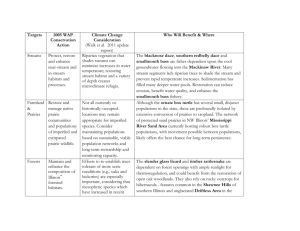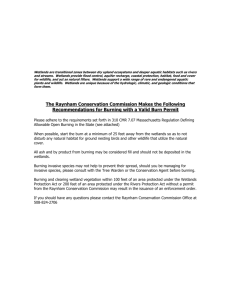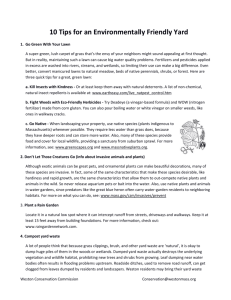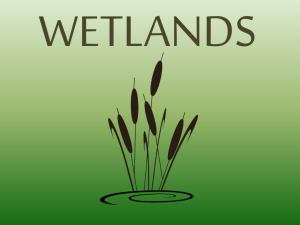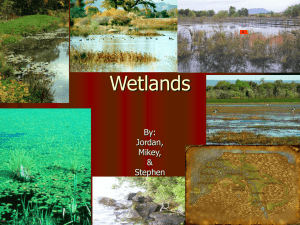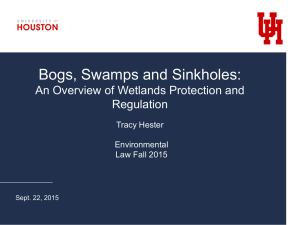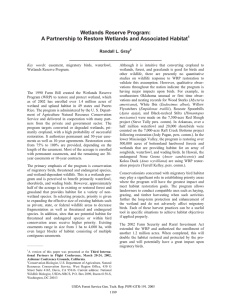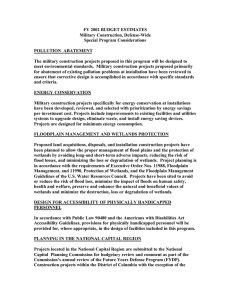309/Old Packhouse Road Mitigation
advertisement
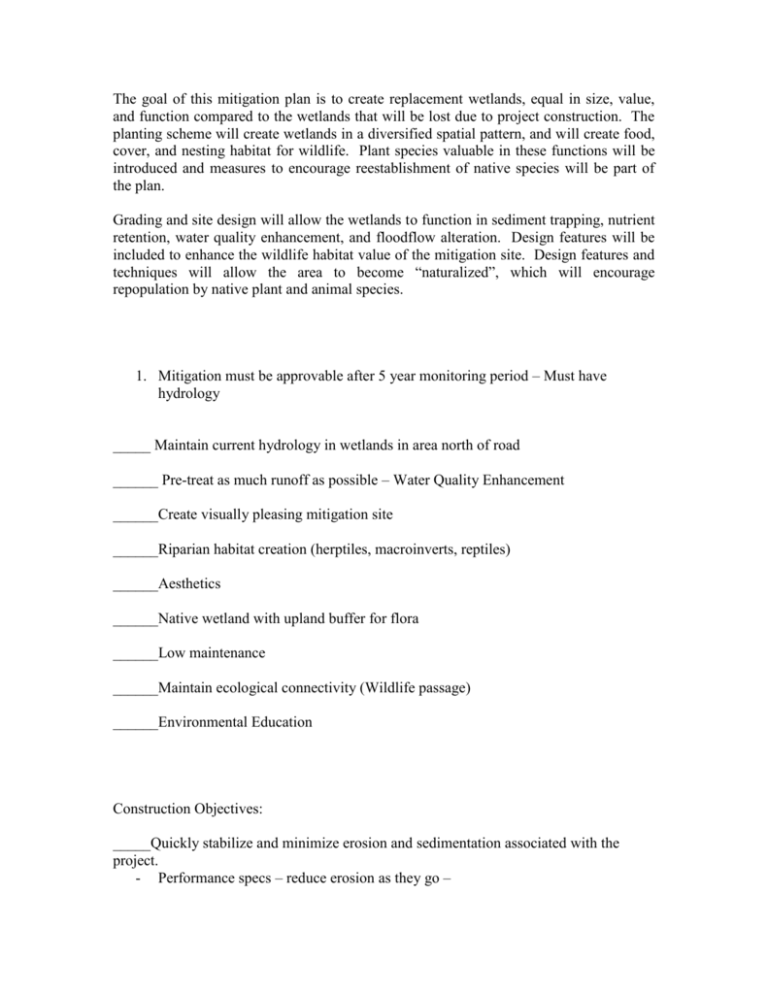
The goal of this mitigation plan is to create replacement wetlands, equal in size, value, and function compared to the wetlands that will be lost due to project construction. The planting scheme will create wetlands in a diversified spatial pattern, and will create food, cover, and nesting habitat for wildlife. Plant species valuable in these functions will be introduced and measures to encourage reestablishment of native species will be part of the plan. Grading and site design will allow the wetlands to function in sediment trapping, nutrient retention, water quality enhancement, and floodflow alteration. Design features will be included to enhance the wildlife habitat value of the mitigation site. Design features and techniques will allow the area to become “naturalized”, which will encourage repopulation by native plant and animal species. 1. Mitigation must be approvable after 5 year monitoring period – Must have hydrology _____ Maintain current hydrology in wetlands in area north of road ______ Pre-treat as much runoff as possible – Water Quality Enhancement ______Create visually pleasing mitigation site ______Riparian habitat creation (herptiles, macroinverts, reptiles) ______Aesthetics ______Native wetland with upland buffer for flora ______Low maintenance ______Maintain ecological connectivity (Wildlife passage) ______Environmental Education Construction Objectives: _____Quickly stabilize and minimize erosion and sedimentation associated with the project. - Performance specs – reduce erosion as they go – - (Minimize E&S post and during construction)
